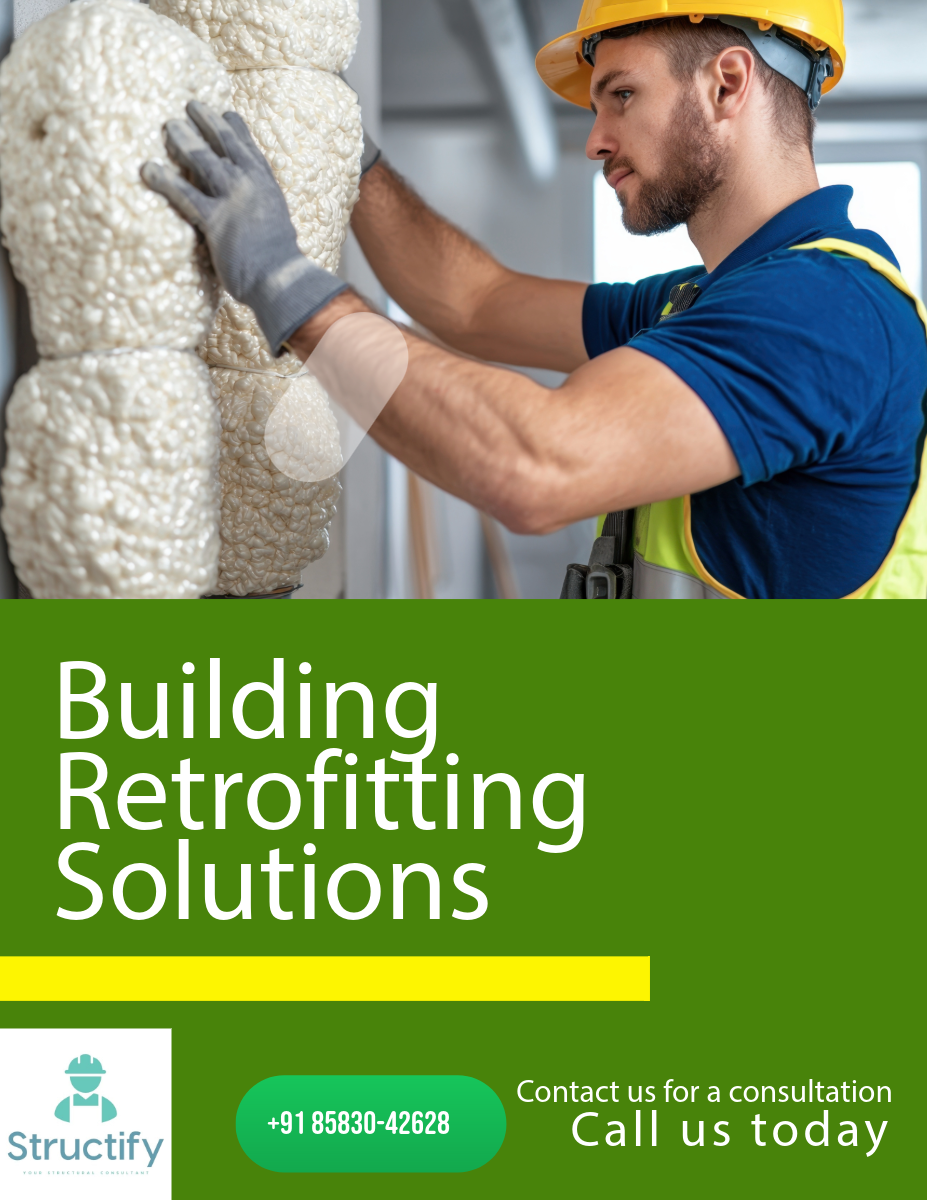Strengthening Your Safety: Understanding Structural Retrofitting and How Our Service Makes a Difference.
Introduction
Have you ever wondered how some older buildings withstand earthquakes or storms just as well as their newer counterparts? The answer often lies in a process called structural retrofitting—a crucial method for improving the resilience and longevity of existing structures. Whether you live in an aging apartment block, manage a commercial facility, or own a cherished historical home, keeping your building safe and up-to-code is more essential than ever.
In this article, we’ll explore what structural retrofitting means, why it matters, and how our tailored retrofitting services can help protect your investment and peace of mind. Read on to discover practical insights, real-life examples, and the unique ways we enhance structural security.
What is Structural Retrofitting?
Structural retrofitting involves modifying or upgrading existing buildings, bridges, or other structures to improve their resistance to loads such as earthquakes, wind, or even everyday wear and tear. Think of it as giving your building a much-needed upgrade to meet present-day safety standards and usage needs.
Why Do Buildings Need Retrofitting?
Over time, building codes evolve as we learn more about engineering and safety. A structure built several decades ago may fall short of today's requirements. Some reasons for retrofitting include:
Seismic activity: Retrofitting helps buildings withstand earthquakes, especially in regions like California or Japan. Climate factors: Strong winds, floods, or snow loads may necessitate strengthening.
Structural aging: Materials degrade over time, making interventions necessary.
Change in use: Repurposing an old warehouse into a modern office, for example, may demand new reinforcements.
"Retrofitting is not just about protection; it’s about preservation—of lives, assets, and the rich stories our buildings carry."
Common Retrofitting Techniques
Some of the most frequently used structural retrofitting methods include:
Adding steel bracing or reinforced concrete jackets to columns and beams.
Base isolation systems for seismic retrofitting.
Supplementing foundation support with micro piles or underpinning.
Installing dampers to absorb vibrations.
Repairing and upgrading masonry with fiber-reinforced polymers.
Each project requires a tailored combination, depending on age, condition, local codes, and intended use.
The Benefits of Structural Retrofitting
Investing in retrofitting doesn’t just tick a few boxes—it brings substantial long-term value
Enhanced Safety and Reduced Risks
A well-retrofitted building dramatically improves safety, protecting occupants from structural failures during earthquakes, storms, or even unexpected accidents.
Real-Life Example
After the 2015 Nepal earthquake, retrofitted schools suffered far less damage and saved lives—proving that upgrades make a real difference (https://www.unicef.org/stories/nepal-stronger-schools-safer-future)).
Increased Property Value
Retrofitting makes properties more attractive to buyers or tenants. In some markets, retrofitted buildings command higher prices due to increased peace of mind.
Compliance with Regulations
Many municipalities now require older structures to undergo retrofitting to meet updated seismic or safety codes. Addressing this proactively can avoid fines and operating shutdowns.
Preserving History and Identity
For heritage buildings, retrofitting balances preservation with safety, ensuring iconic facades or unique architectural features are maintained for future generations.
How Our Structural Retrofitting Service Helps You?
Choosing the right partner for retrofitting can be as critical as the process itself. Here’s how our specialized service stands out:
Comprehensive Assessment and Personalized Solutions
We begin every project with a thorough onsite inspection and engineering assessment, analyzing
Building age, type, and materials.
Current structural integrity.
Site-specific risks (earthquakes, floods, etc.).
Your goals and budget.

Based on this, we craft a strategy unique to your property. We don’t believe in one-size-fits-all solutions.
Transparent Communication and Collaboration
Our team translates technical findings into everyday language, empowering you to make informed choices. We’ll walk you through:
The rationale behind recommended interventions.
Detailed cost and time estimates.
All compliance and permitting requirements.
Safe, Non-Disruptive Execution
Our retrofitting methods are designed to minimize disruptions to your daily life or business operations
Phased construction:
Scheduling work in stages so you can keep using your space. Modern materials:
Using lightweight, high-strength materials to speed up installation.
Environmental care:
Safeguarding against pollution, waste, and disturbance.
Peace of Mind and Lasting Results
Once complete, we provide:
Full documentation for regulatory compliance.
Warranty on all retrofitting work.
Annual follow-up inspections, if desired.
"Our goal isn’t just to strengthen structures—it’s to strengthen trust."
Frequently Asked Questions: Retrofitting Demystified
How long does a retrofit typically take?
The timeline can range from a few weeks for minor upgrades to several months for complex projects. We’ll provide a detailed schedule upfront.
Will retrofitting harm the look of my property?
We always strive to preserve or even enhance the building’s appearance, especially for historical or aesthetic properties. Retrofitting is about improvement, not intrusion.
Is it expensive?
While costs vary by need and size, retrofitting is an investment—helping avoid far greater losses from disasters or regulatory penalties. Some insurance providers even offer lower premiums for retrofitted buildings.
Resources for Further Reading
American Society of Civil Engineers: Seismic Rehabilitation of Existing Buildings](https://www.asce.org/publications-and-news/civil-engineering-source/article/2023/11/the-case-for-seismic-retrofits-in-the-u-s)
FEMA: Earthquake-Resistant Design Concepts](https://www.fema.gov/emergency-managers/risk-management/earthquake/design)
Conclusion
Structural retrofitting is more than a technical procedure—it’s an investment in safety, longevity, and the future of your building. Whether you’re managing office blocks, living in a charming historic home, or overseeing public infrastructure, proactive retrofitting brings peace of mind and tangible value.
Ready to learn how our team can specifically help your property? Reach out for a no-obligation consultation and take the first step towards a safer, stronger building.
“Let’s build tomorrow’s safety into today’s structures, together.”


